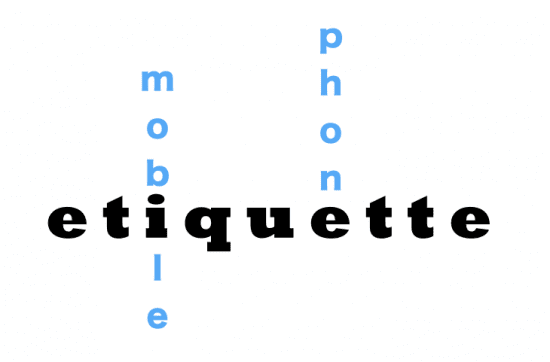Have you ever been mad at the way someone has used his/her mobile phone? For example, do any of the images below irritate you? Do you find that mobile etiquette is missing?
As mobile, tablet and phablet variations continue their indomitable overtaking of our connected lives, there are a number of major issues with which society, companies and governments must contend. These include security, privacy, device compatibility and, importantly for the more civically minded people, mobile manners or mobile etiquette.
Mobile etiquette
It is estimated that this year, the number of mobile phones in circulation will outnumber the number of people on this planet. There are already 1.1 billion connected “smartphones” out there. People use smartphones in public for a slew of reasons in any number of situations. Of course, in many cases, the usage is entirely normal and warranted. Sometimes, it can almost be by mistake (i.e. I pressed the wrong button). Unfortunately, however, in many other cases, the usage is unnecessary and/or discourteous relative to the people around. The reason for this current situation is that mobile phones and tablets have come on the scene like a virtual tsunami. And, we have not adjusted our attitude and behavior accordingly. Without any substantive education at school, training at work or appropriate guidance from parents and friends, the usage of mobile or smart phones is left to one and all to decide as he/she sees fit. Even if the mobile / smart phone is a deeply personal device with a lot of personal information, addresses, photographs, music and video collections, etc., this should not mean that we are free to use it in public in whichever manner we wish.
What is needed is a healthy dose of good manners.
The Crest Framework
The following is a proposed framework on which to base a code of behavior for people using a mobile phone in various types of situations. In a discussion with my good friend, Jeremy Waite, I was inspired first to provide a framework for the mobile etiquette. I have called it the CREST Framework.
- Context – What is the environment in which you find yourself using the phone? How public or quiet are the surroundings? What happened before or is expected to happen afterwards? What is the reason for using the smartphone? If it’s a phone call, who called whom?
- Relationship – In whose presence are you using the smartphone? Who is on the other end of the communication that trumps the people in your offline presence?
- Expectations – To what extent were expectations established beforehand? Is there a reason that the phone should be out? Are any pre-identified calls particularly urgent? Is this a no-phone night out?
- Settings – To what degree have the phone settings been correctly adjusted? This can be tricky, too, because different situations can require different settings.
- Time – How much time does the phone usage last? Is it an in-and-out? Is there a specific task to accomplish?
When looking to establish a code of behavior or a mobile etiquette (‘mobiletiquette‘), these five criteria need to be taken into consideration. Of course, no one size fits all. In the end of the day, there will be no way to enforce any specific behavior. Some countries and cultures do a better job than others, such as Japan where the common practice is not to speak loudly and, in public transportation, phone conversations are not permitted (if only deeply frowned upon, as opposed to penalized).
In the next post, I will attempt to lay out a mobile etiquette standard that is adjusted according to ten different situations. Please comment! Your participation and input will be valued!












